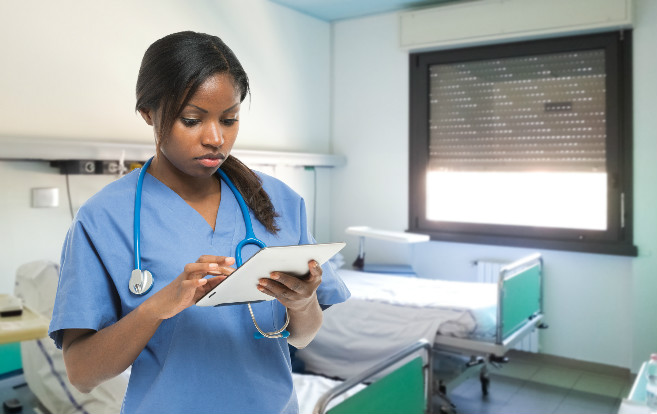Keeping It Personal: EMRs Shouldn’t Prevent Patient Interaction

By Megan M. Krischke, contributor
Whether your assignment facilities are using Epic, AllScripts or another electronic medical records (EMR) system, they are sure to have at least one thing in common: they are changing the way that travel nurses and other staff interact with patients.
While the old style of paper documentation had a narrative flow, entering data in EMRs involves more checklists and short answers, which can sometimes make interactions feel less warm and personal--especially if nurses find themselves staring at a screen instead of looking at their patients.
But it doesn’t have to be that way. In fact, the EMR is a powerful tool for accessing information and for teaching, and travel nurses can learn how to use EMRs to actually enrich their patient interactions.
“Nurses should take the opportunity to explain the EMR like they would any other tool--whether it is a pill in a cup, a blood pressure cuff or a workstation on wheels,” began Marianela Zytkowski, DNP, MS, RN-BC, associate chief nursing officer, department of nursing informatics at Cleveland Clinic. “You should always explain what that device is, why you are bringing it in and how it will be incorporated into the care you will provide.”
Both Zytkowski and Julie Vilardi, RN, MS, executive director, strategic projects and clinical informatics at Kaiser Permanente, caution nurses to not let the electronic device create a physical barrier between them and the patient, and to not become so wrapped up in entering data that they forget to make eye contact and truly interact with patients.
“Patients today are more technologically savvy than ever. They have so much interaction with devices and systems in their daily lives that they expect that their nurses will be able to help translate how to use these items to better record and educate them on their plans of care,” explained Zytkowski. “Nurses speak about the benefits of the record and explain the types of information that can be obtained and how it will enhance the patient’s care.”
“The EMR gives nurses quick access to a vast amount of information while they are documenting, which can be used to involve the patient in the discussion,” remarked Vilardi. “Nurses can turn the monitor toward the patient and show what is contained in the EMR--like a graph of weight loss or blood glucose levels.”
“There are so many opportunities with EMRs to have different patient views, to share online media like handouts and videos, and really engage the patient in the technology,” added Zytkowski.
“We encourage nurses to explain to the patient why they are reviewing information on a screen, to tell the patient how this information will be used and to show the patient what the next step in the process is,” she continued. “For example, the nurse might say to the patient, ‘I see the doctor has just written the orders for you to be discharged. Let me review these orders with you and together we can look at some online educational material that I will then print for you so you have these points as a reminder to help you with your transition back at home.’”
If you are having trouble transitioning to using the EMR, take some time outside the patient room to familiarize yourself with it and don’t be afraid to ask questions. Vilardi points out that nurses often have an advantage over other clinicians because the frequency with which they use the EMR will mean they become proficient on new systems more quickly.
“My sincere goal in the work that we are doing now in clinical informatics is to really make the technology a seamless part of the environment, but we aren’t there yet,” she said. “We want to bring much more technology into the patient environment, like video conferences with specialists. The goal is to have the technology so well integrated that you don’t notice it is there.”
“Nurses, like providers, are in a period of cultural transformation with optimizing their adoption of automated solutions at the bedside,” stated Zytkowski. “They are at the start of this transformation, but it is such an exciting time because they are forging new and innovative ways to adopt real-time information at the point of care.”
© 2013. AMN Healthcare, Inc. All Rights Reserved.